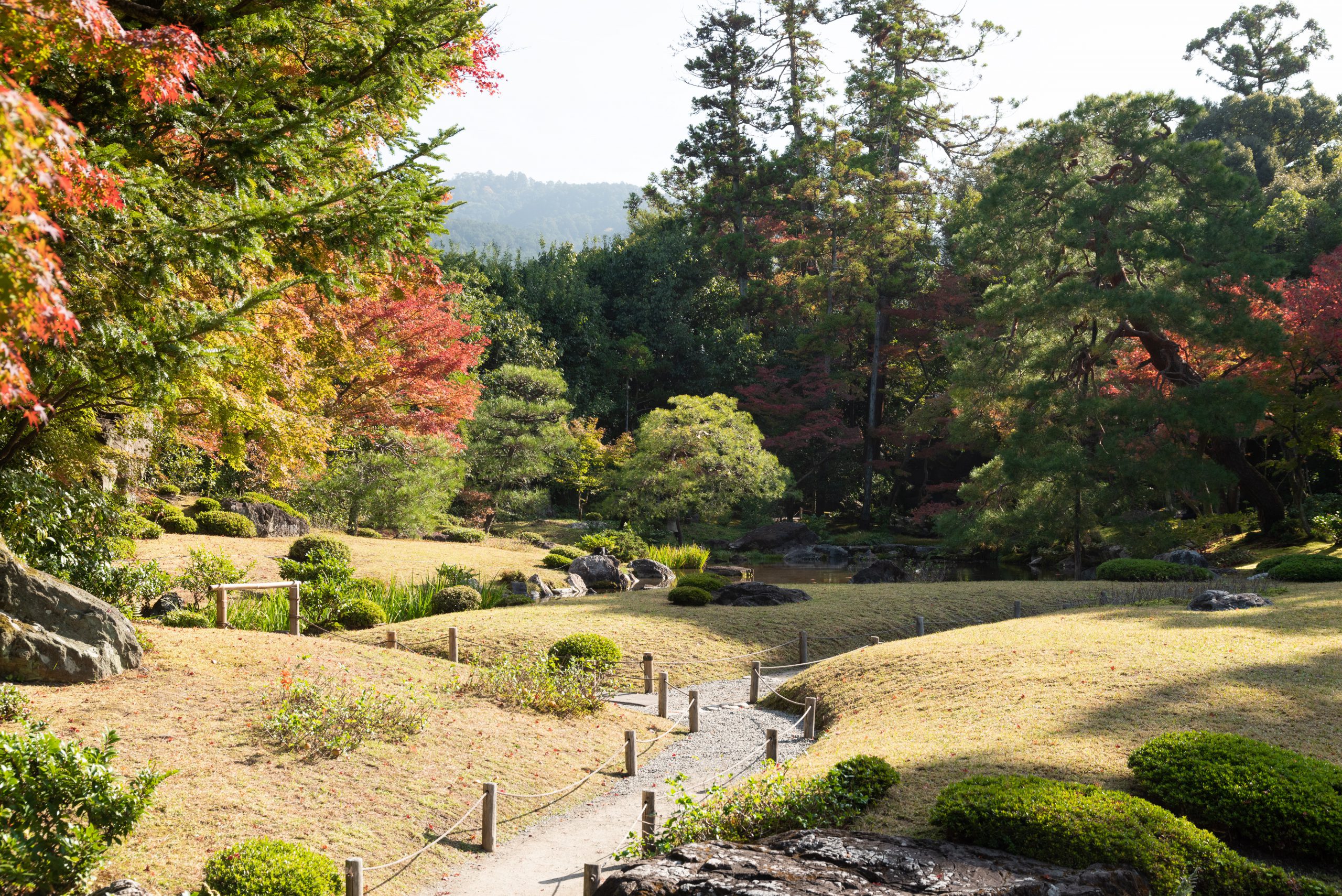Ueyakato Landscape has posted a new keywords article to its English website!
2022/01/31|News

Ueyakato Landscape has posted a new keywords article to its English website!
This time we're taking a look at the artificial hill (tsukiyama), a seemingly ubiquitous feature seen across many Japanese garden genres.
So, why do Japanese gardens so often feature artificial hills? The most straightforward answer is that they add slope and depth to the landscape, thereby revealing new possibilities hidden within it. Yet on closer inspection, we find that the artificial hill’s significance has been fundamentally reinterpreted in each age. In the ancient Nara capital, it appears as a stone arrangement that may have been a metaphor for an otherworldly paradise. After imperial Kyoto’s founding, however, earth dug up for pond gardens at noble residences was used to create hills representing natural mountain scenery. The pondless dry landscape garden (karesansui) used the artificial hill symbolically by placing stone arrangements on it. But with the surge in the strolling pond garden’s popularity during the Edo period (1603-1868), artificial hills were once again used to suggest natural mountain scenery.
The desire to create mountains is so widespread across human history it is tempting to see in it a motif that, if not completely universal, can at least be called deeply primordial. As Japanese gardens continue to globalize in the twenty-first century, it may well be that the most interesting chapters in the artificial hill’s history have yet to be written.
Read the full article here!
So, why do Japanese gardens so often feature artificial hills? The most straightforward answer is that they add slope and depth to the landscape, thereby revealing new possibilities hidden within it. Yet on closer inspection, we find that the artificial hill’s significance has been fundamentally reinterpreted in each age. In the ancient Nara capital, it appears as a stone arrangement that may have been a metaphor for an otherworldly paradise. After imperial Kyoto’s founding, however, earth dug up for pond gardens at noble residences was used to create hills representing natural mountain scenery. The pondless dry landscape garden (karesansui) used the artificial hill symbolically by placing stone arrangements on it. But with the surge in the strolling pond garden’s popularity during the Edo period (1603-1868), artificial hills were once again used to suggest natural mountain scenery.
The desire to create mountains is so widespread across human history it is tempting to see in it a motif that, if not completely universal, can at least be called deeply primordial. As Japanese gardens continue to globalize in the twenty-first century, it may well be that the most interesting chapters in the artificial hill’s history have yet to be written.
Read the full article here!
